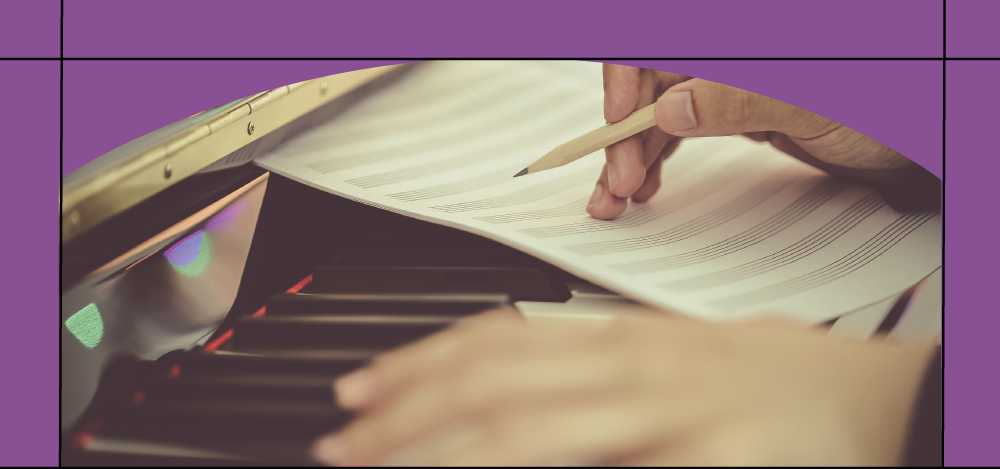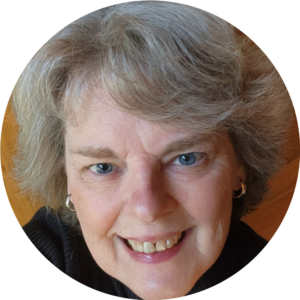Your cart is currently empty!
Historical Perspective on American Women Who Compose for Band
(from American Composers of Band Music 1865-1996, dissertation by the author, Ball State University, 1996)
By Dr. Susan D. Creasap, Professor Emeritus, Morehead State University

When considering the history of women who compose music for the concert band, one must first look at the historical development of the concert band.
Bands and the music they perform, traditionally have been linked to the masculine domain, probably because of their strong ties to the military. From the earliest uses of trumpets and trombones to signal events in the military and at court, to the beginnings of the military band tradition in the United States, performance on wind instruments tended to be a masculine endeavor. Indeed, for most of this country’s musical history, women were expected to perform on keyboard and string instruments, as these instruments were deemed more appropriate to the feminine temperament and physique. The association of bands, and wind and percussion instruments, with men influenced the early development of women as composers of band music.
The term “band” initially was used to indicate almost any instrumental combination. There were bands for the militia, town bands, and court bands. While the typical military band might include fifes, trumpets, and drums, the standard town band employed cornets and trombones in various combinations. By the seventeenth century the fundamental instrumentation of both types of ensembles was expanded, with the military band adding trombones, and the town bands including trumpets and drums. Because the bands aligned with the armies usually were called upon to perform music of a ceremonial nature, the brass and percussion combination was well-suited to the repertoire of fanfares and flourishes. Although the band was typically a military unit, it became fashionable during the reign of Louis XIV, the Sun King, for each royal household in Europe to have its own military ensemble. The bands at court were represented by yet another instrumentation, and indeed, the earliest extant examples of military marches were composed by Jean-Baptiste Lully for an ensemble of oboes1. The musicians at court and in the military were male, and it is this association that has been the bane of the woman composer of band music.

Women traditionally have been led to believe that brass and percussion instruments are masculine in nature, while the voice, keyboards, and flutes are more attuned to the female disposition. In addition, performance on these “feminine” instruments was used “for domestic entertainment and required no facial exertions or body movements that interfered with the portrait of grace the lady musician was to emanate.”2 The masculine-feminine association with the various instruments was so strong that it was not until the late nineteenth century that women are reported to have performed on “masculine” instruments. The general negative opinion toward female wind or brass players is reflected in an article written in 1904 after a series of interviews with New York conductors: “Women harpists are most desirable in an orchestra but as cornetists, clarinetists, flutists and the like, they are quite impossible, except in concert work. Women cannot possibly play brass instruments and look pretty, and why spoil their looks?”3 Because women were not encouraged to play wind, brass, or percussion instruments, it is not surprising that their creative efforts were turned toward compositions for the voice and keyboards, stifling their output in other areas.4 This historical lack of experience with band instruments may be the reason that so few women chose to compose for winds and percussion until more modern times.
Because women were not encouraged to play wind, brass, or percussion instruments, it is not surprising that their creative efforts were turned toward compositions for the voice and keyboards, stifling their output in other areas.
By the later years of the nineteenth century, Patrick S. Gilmore and John Philip Sousa had established the professional military band. These ensembles functioned independently of their regimental origins and essentially performed the popular music of the day. The performers in these bands were men, and although women appeared regularly as soloists, they generally were not full-time members of the ensemble. The John Philip Sousa Band performed with a woman harpist, but she did not wear the traditional Sousa uniform nor was she considered a member of the band. Her status was similar to that of a guest soloist.5 However, the ladies chose to create performing opportunities by organizing their own all-female ensembles.6 Dr. Patricia Backhaus (Past-President of WBDI) has identified no less than nine such ensembles that were active in the United States during the first quarter of the twentieth century, including the Barnum and Bailey’s Ladies Circus Band. These early female bands were modeled in instrumentation after theGilmore and Sousa bands and even performed the same repertoire.7

The typical band concert program of Sousa’s day included popular songs, marches, instrumental solos, and transcriptions of orchestral works, and it was common practice for the leaders and some members of the bands to compose works for their respective groups. No Sousa Band concert program would be complete without selections composed by its famous leader; likewise, existing concert programs of the “Helen May Butler and American Ladies Military Band” list works composed by Miss Butler and other women. With the evidence clearly indicating that women have been involved in the concert band scene since at least the early 1900s, it is amazing that even at the close of the twentieth century only a small percentage of the vast number of compositions written expressly for the concert band have been produced by women, and furthermore, many remained in manuscript, rendering them unavailable to the performing public. The problem of availability of works for band by women composers was evidenced by the fact that one publishing company specializing in promoting music composed by females, Hildegard Publishing, did not in 1996 (and still does not) include a “band” category in its catalogue. However, the greater problem was a matter of awareness of the existence of these women composers and their works. In 1996 no individual source of information concerning women composers who had written for band was extant. (The author’s dissertation was the first study to remedy this.)
William H. Rehrig’s excellent source book, The Heritage Encyclopedia of Band Music Composers and Their Music, contains information concerning a number of women composers. Paul E. Bierley, the editor, indicated that, although more women composers would be added to the upcoming supplement to the initial volumes, a reference devoted entirely to women band composers was both practical and timely. However, as the researcher began to compile such a list in pre-internet days, it became apparent that not only was there difficulty in locating those women who had written for band, it was even more problematic to determine when and where the person lived, or even if the person was male or female.
Many women used male pseudonyms in order to be published, and others chose to use initials as a means of hiding their gender. Some of the early American female composers were identified by a first name8 and sometimes only as “a lady from South Carolina.”9 Even in 1990, composer Nancy Seward continued to publish under the name “N.H. Seward” because she felt that her band music would not receive adequate consideration should she identify herself as female. It was only through the persistent efforts of her publisher, Joyce Pinnell at Wingert-Jones Music, Inc., that Seward was convinced it was now safe to use her given name.10 The pioneer women composers of the early to mid-twentieth century were infinitely more aware of gender-related obstacles than the newer generation of female composers.
One woman composer of the mid-twentieth century indicated that her husband convinced her to use a male pseudonym since he feared that her music would not sell under her own name. The identity of the composer was a carefully guarded secret for more than forty years. In fact, so well-protected was this information that for a long time, the pseudonym was attributed to another composer who happened to be male.11 Although at the time of the writing of the 1996 dissertation, she had recently identified her pen name, the composer remained sensitive to the issue and asked not to be directly quoted or identified in the study. However, in 2007 when Elizabeth Wahr Ludwig Fennell passed away, her obituary includes her male pseudonym — “Eric Hanson.”12 As Otto Ebel wrote more than a century ago, “That prejudice against women’s work must have tended to depress and discourage, is certain, and is best shown by the fact of many women composers concealing their identity under male noms-de-plume on the title page of their compositions.”13

Although Ebel’s words were intended to comment on the status of women who composed in all genres, how much more relevant these words are to the women who have chosen to compose for bands. Far too frequently the gender of a composer who has used initials or a male pseudonym remains a mystery. It is challenging to determine just how many such names have been used by females, and therefore, because the gender cannot be ascertained, these unidentified women may still lack the recognition they are due.
Of the two hundred plus composers who were represented in the 1996 study, more than three-quarters had not published their works or were represented by small publishing companies with a limited sales range. In fairness to the larger music publishing companies, the early lack of women composers in the music catalogues may have been due to the hesitancy of women to bring their compositions to the attention of a publisher. Indeed, the interviews conducted with contemporary women composers supported the theory that women have faced and continue to face discrimination in the professional world of music composition. Some of the women who were composing during the mid-twentieth century indicated that publishers actually told them that music composed by women was not marketable. Although most of these women asked not to be identified, Judy Mathis, who had published at least twenty-four works for band since 1955, reported that only her first composition, “Impressionata,” has appeared under her given name; all other selections are credited to her male pseudonyms: John O’Brien, J.M. Post, J.M. DeWeeze, and John J. Haney. Julie Giroux has stated that although she did not use male pseudonyms, she often used her initials when negotiating a contract with a first-time client to avoid any possible gender-bias even though her status as a successful film-writer was secure.14

Several of the publishing companies contacted during the 1996 study expressed regret that no women composers were included in their catalogues, and they indicated that this was an area that was worthy of improvement. These companies have been true to their word and more women composers are being published each year.
More than a century ago Rupert Hughes wrote
This is not the place to take up cudgels for a contest on the problem of women’s right to respect in the creative arts. There are some, it is true, who deny fervently that the feminine half of mankind ever has or can or ever will do original and important work there. If you press them too hard they will take refuge up this tree, that all women who ever have had success have been actually mannish of mind, — a dodge in question – begging that is one of the most ingenious ever devised; a piece of masculine logic that puts to shame all historic examples of woman fallacy and sophistry. It seems to me that the question is easily settled on this wise: it is impossible for a rational mind to deny that the best work done in the arts by women is of better quality than the average work done by men. This lets the cat’s head out of the bag and her whole body follows pell-mell… All over the world the woman-mind is taking up music. The ban that led Fanny Mendelssohn to publish her music under her brother’s name, has gone where the puritanic theory of the disgracefulness of the musical profession now turneth its choking coils. A publisher informs me that where compositions by women were only one-tenth of his manuscripts a few years ago, they now form more than two-thirds. From such activity, that is worth while is bound to spring. Art knows no sex, and even what the women write in man-tone is often surprisingly strong, though wrongly aimed. But this effort is like the bombast of young people or a juvenile literature; the directness and repose of fidelity to nature come later. The American woman is in the habit of getting what she sets her heart on. She has determined to write music.14
Hughes was correct — the American woman has chosen to compose. Despite the challenges faced by women composers of band music, as of 1996 more than two hundred women had contributed over five hundred compositions to the band repertoire. During the subsequent twenty-eight years the number of women composers represented by the major publishing companies has significantly increased with new names appearing every year. A simple Google search of “women composers of band music” brings up a plethora of information and all major music publishing companies include works for band composed by women. She has overcome the obstacles presented to her by the history of bands, by the prejudices against women, and by her own fears. She has established herself as a worthy composer and is making significant contributions to the repertoire for wind bands. Times have changed.
- Richard Franko Goldman, The Concert Band, 2 vols. (New York: Rinehart and Co., Inc., 1946), 1:21-26. ↩︎
- Judith Tick, “Passed Away is the Piano Girl: Changes in American Musical Life, 1870-1900,” in Women Making Music, eds. Jane Bowers and Judith Tick (Chicago: University of Illinois Press, 1987), 327-328. ↩︎
- Tick, 332-333. ↩︎
- See Tick, 327-333. ↩︎
- Patricia D. Backhaus, interview by author, 15 January 1996. ↩︎
- Separate-sex organizations also were found at this time in other aspects of American life. See Beth Macleod, “Whence Comes the Lady Tympanist? Woman and Musical Instruments in America,” The Maud Powell Signature 1, no. 3 (Winter 1996): 5-8, 26-28. ↩︎
- Patricia D. Backhaus, interview by author, 29 June 1995. ↩︎
- Judith Tick, American Women Composers before 1870 (Ann Arbor: UMI Research Press, 1983), 75. ↩︎
- Tick, 139. ↩︎
- Nancy Seward, letter to the author, 17 November 1995. ↩︎
- William Rehrig, telephone interview with the author, 7 February 1996. ↩︎
- https://obits.cleveland.com/us/obituaries/clevela nd/name/elizabeth-fennell-obituary?id=16652711, accessed 4 September 2024. ↩︎
- Otto Ebel, Women Composers: A Biographical Handbook of Women’s Work in Music (Brooklyn: F.H. Chandler, 1902), iv. ↩︎
- Julie Giroux, telephone interview by author, 11 March 1996. ↩︎
- Rupert Hughes, American Composers: A Study of the Music of This Country and its Future, with Biographies of the Leading Composers of the Present Time, new revised ed. (Boston: The Page Company, 1914), 423-425. ↩︎
Contributing Expert

Dr. Susan D. Creasap Professor Emeritus of Bands and Music Education at Morehead State University. She earned her D.A. in Wind Band Conducting/Horn Performance from Ball State University, M.A. in Music Education/Music History from the University of Minnesota, and B.S. in Music Education from Indiana University of Pennsylvania. Dr. Creasap’s varied career includes 18 years of experience as a band director in the public schools of Pennsylvania and Tennessee; and more than 20 years as a university marching and concert band director (Clarion University of Pennsylvania, Ball State University, Morehead State University).